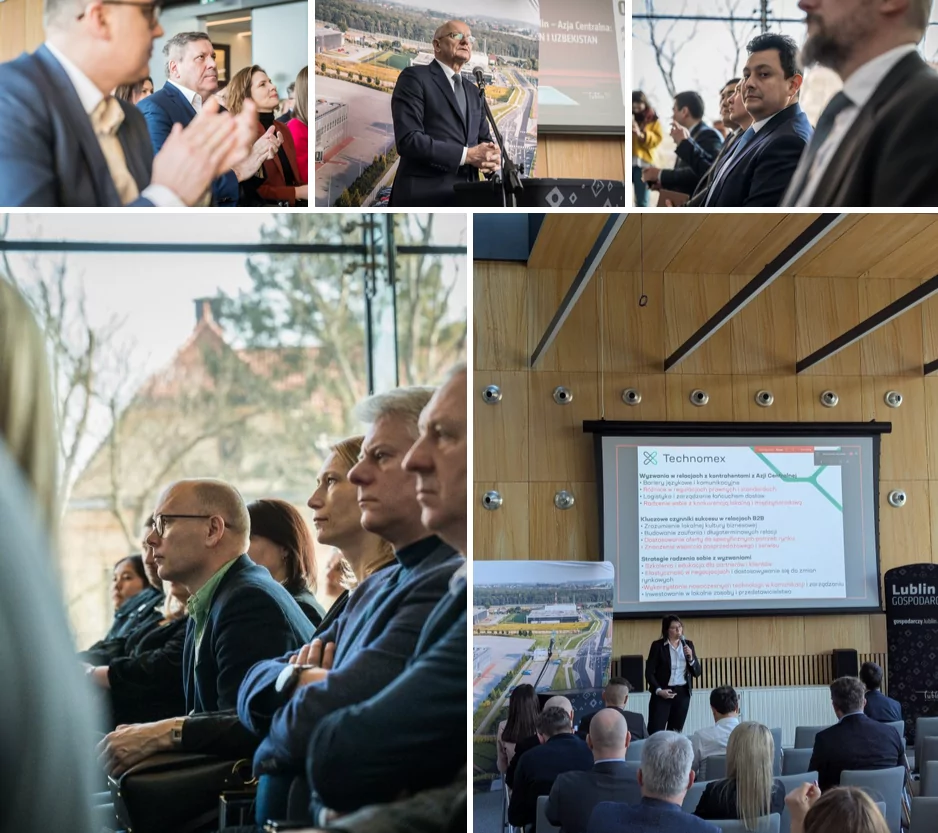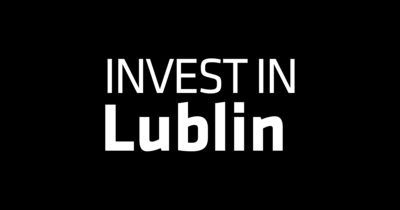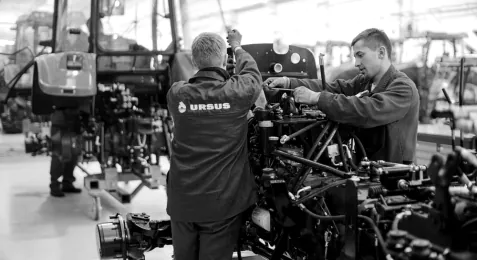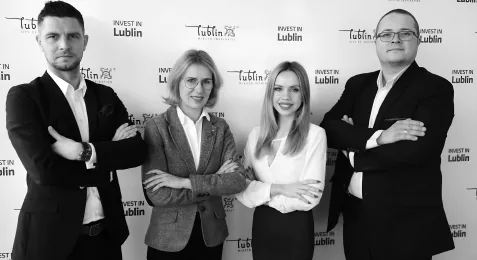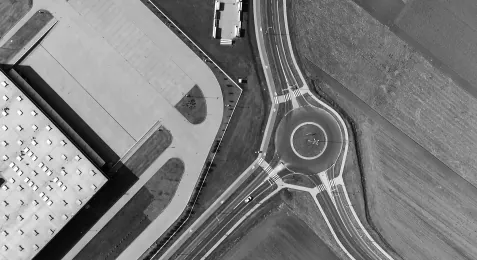Lublin Info Centre
Supporting Lublin entrepreneurs: conference on export opportunities in Central Asia

“In collaboration with industry experts, we have organized another event designed to equip Lublin entrepreneurs with essential tools for launching and expanding their export ventures. According to a recent report by two Lublin universities—John Paul II Catholic University of Lublin (KUL) and Maria Curie-Skłodowska University (UMCS)—the average export growth rate in Lublin and the Lublin Metropolitan Area between 2015 and 2023 exceeded Poland’s national export growth. It is crucial for Lublin and the region to maximize their potential. Compared to the rest of the country, Lublin’s industrial sector has a competitive edge, particularly in food production, chemical manufacturing, and machinery and equipment production,” said Krzysztof Żuk, Mayor of Lublin.

A major highlight of the event was the participation of Amirsaid Agzamkhodjaev, Ambassador of the Republic of Uzbekistan to Poland, and Makhanov Batyrzhan, First Secretary of the Embassy of Kazakhstan. Their presence enriched the discussions as they shared valuable insights into the Uzbek and Kazakh markets, highlighting potential areas for collaboration between Poland and Central Asia. The seminar opened with a keynote speech by Janusz Piechociński, President of the Polish-Asian Chamber of Industry and Commerce, who provided an in-depth analysis of the Central Asian markets.
Key takeaways:
- Relationships Over Transactions: Companies looking to expand into Central Asia should focus on building long-term relationships rather than treating interactions as mere business transactions. Establishing trust, engaging with local cultures, and positioning Poland as a key gateway to the EU for Central Asian countries can significantly enhance business success.
- Collaboration as the Key to Success: Even competing businesses can benefit from working together when entering distant markets. Joint projects, knowledge sharing, and collective efforts to build a strong Polish brand can improve the chances of success.
- China and the Middle Corridor: The increasing presence of China in the region presents an opportunity to diversify trade routes and leverage the Middle Corridor as an alternative transportation pathway. This opens new export opportunities for Polish companies.
- Logistics Matters: Exporting to Central Asia requires careful consideration of costs, delivery times, and security. Proper documentation, including invoices and transport documents, is crucial, and a solid understanding of Incoterms 2020 is essential for managing responsibilities and risks effectively.
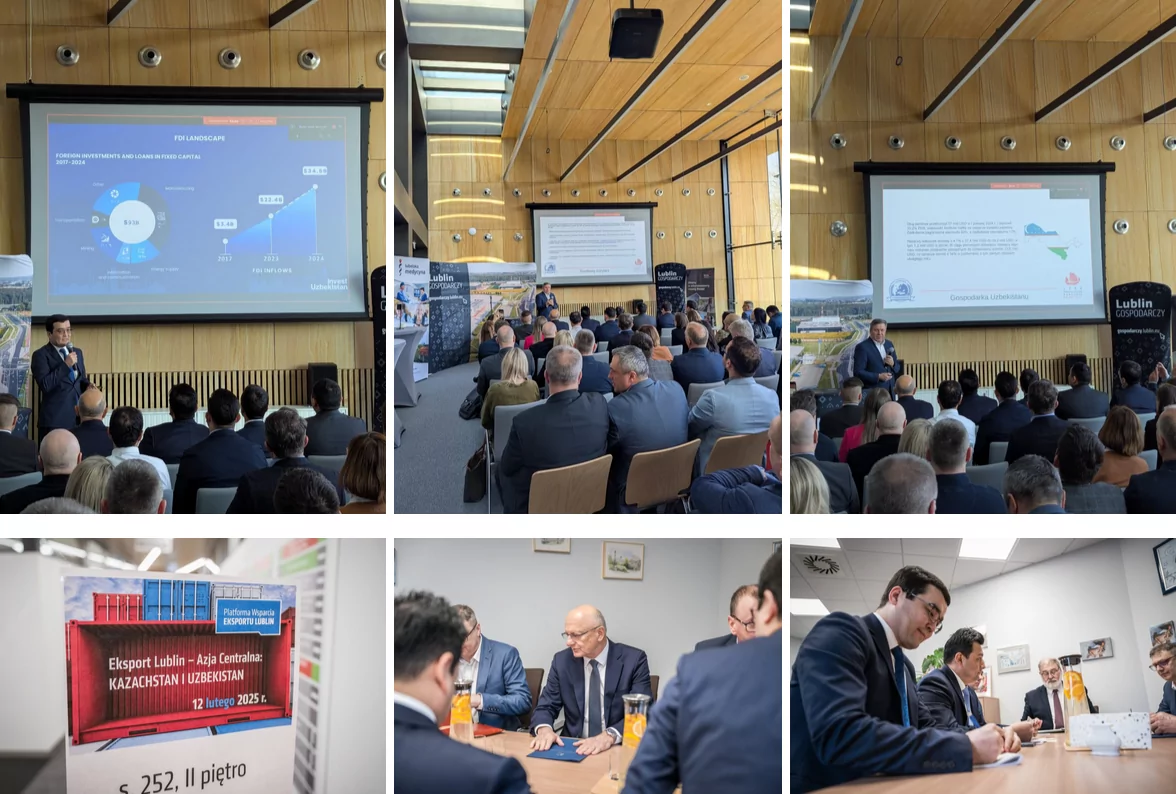
Export support:
- Event Partners: The National Development Bank of Poland (BGK) and the Export Credit Insurance Corporation (KUKE S.A.) presented financial and institutional support mechanisms that strengthen trade opportunities.
- BGK provides financial support for exports and foreign investments, including export credits and guarantees, helping Polish firms expand into Central Asia.
- KUKE S.A. offers state-guaranteed export insurance, protecting transactions and minimizing the risks associated with international trade.
Opportunities for the medical sector in Kazakhstan and Uzbekistan:
- Growing healthcare expenditures, modernization of healthcare systems, telemedicine development, and rising chronic disease rates create investment opportunities in medical technology.
- In Uzbekistan, 80% of medicines are imported, and plans are underway to build a multispecialty hospital with 800 beds.
- Kazakhstan’s healthcare infrastructure includes 11,120 medical facilities and 96 manufacturing companies, including 41 producing medical devices, 33 pharmaceutical firms, and 22 medical equipment manufacturers.
- Investment opportunities in Kazakhstan include vitamin, antibiotic, pharmaceutical, and vaccine production, as well as medical equipment and accessories manufacturing.
Important dates:
- February 25, 2025 – Poland-Uzbekistan Business Forum in Tashkent
Details: https://www.paih.gov.pl/events/forum-biznesu-polska-uzbekistan/ - April 2025 – Business Mission to Uzbekistan (organized by the Marshal’s Office of the Lublin Voivodeship)
Includes participation in TIHE 2025 – Tashkent International Healthcare Exhibition
Details: https://gospodarka.lubelskie.pl/pl/aktualnosci/misje-gospodarcze/udzial-w-wydarzeniu-targowo-wystawienniczym-targi-tihe-2025
Thank you for your participation! Stay tuned for updates on upcoming events.
